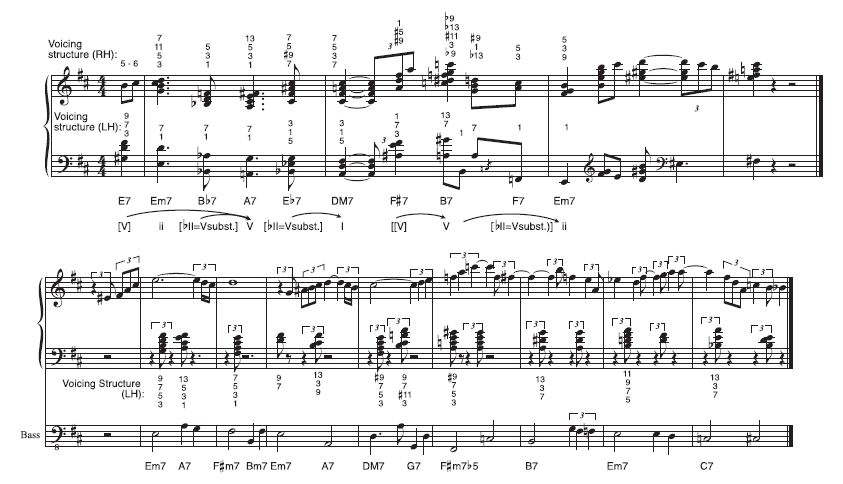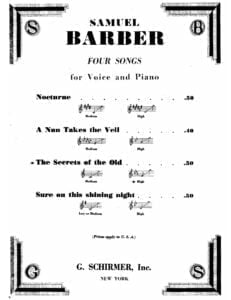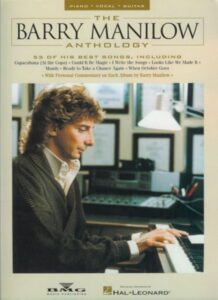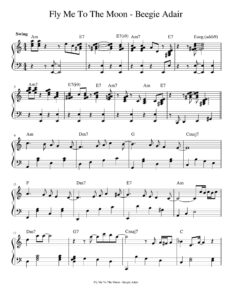- Thelonious Monk’s Harmony, Rhythm, and pianism (Part 3)
- Read Part 1 here and Part 2 here.
- Rhythm and Pianism
- Rhythm
- Pianism
- Analysis of Two Peers
- Find and download Thelonious Monk’s sheet music transcriptions in our Library.
- Thelonious Monk With John Coltrane (1961) (Full Album)
Thelonious Monk’s Harmony, Rhythm, and pianism (Part 3)
Read Part 1 here and Part 2 here.
Rhythm and Pianism
Rhythm
The rhythmic traits for which jazz is known and at which it excels—groove, swing, speed, heat, cool, polyrhythm, conversational interaction among players, dense and irregular improvised motives and phrases, antiphonal call and response, and more—are all but absent in ISC. Most modern jazz group performance emphasizes strict periodicity with terrific forward momentum created by players’ rhythmically propulsive contributions. Formidable mastery, poise, and virtuosity are needed to play.
Tempi are characteristically either fast enough to scare off would-be pretenders, or, just as daringly, cooled off to an unruffled “ballad” speed, and steady in either case. The metric backbone is the succession of harmonies with the beat usually actualized and propelled by the walking quarter notes of the bass and the drums’ “ride” cymbal. Though harmonies change on measure downbeats and sometimes middles, the beats in between—beats and in a four-beat measure—are stressed to create a driving backbeat.
Solo performances and recordings are almost exclusively the provenance of pianists, who could use the left hand to simulate the roles of the rhythm section, with either walking bass lines or the evocation of earlier styles such as stride or boogie-woogie. Monk himself made extensive use of these latter techniques on his own solo records, as well as on the unaccompanied numbers that were generally included in his live sets. Solo performers such as Art Tatum would also “extemporize,” straying from steady time in introductions, quasi-cadenzas, and so on. For Monk, though, a solo ballad like ISC was an opportunity to stretch time in a far more radical manner, eschewing steady time almost completely.
Swing, an idiomatic variation of the timing of the subdivided beat, depends on underlying regularity. It involves a dynamic relationship between measured periodicity and the realm of unmeasured music, rhythmic freedom that can be implied through soloists’ styles. This dynamism in turn references a melodic vernacular—the sense that a soloist is “speaking through their horn.” Some would argue that this has to do with the lyricism of the human voice, others that it represents some kind of middle ground between a discursive, rhetorical European way of making music and a more interactive, poly-rhythmic African approach. Others might say that both are true or that it simply feels good, and that, having been discovered and developed at the turn of the twentieth century, it proved irresistible.
Monk’s ISC can be said to swing only in the colloquial sense of being compellingly musical, that is, simply because he is saying something in a distinctive way. But strictly understood, swing can exist only against a conception of steady time, and in this recording nothing keeps time.
Except fleetingly in a few spots, it is impossible to move the body in any regular pulsation to Monk’s playing. He is clearly not keeping steady time internally—or else he has a very different clock. If we listen intently for the regularity most bodies crave—and which we expect from familiarity with more standard versions of the song—we must jolt in and out of time with him. The slow regular beat of the tune’s harmonic progression remains impassively present, a law both obeyed and mocked. Monk often played solo ballads in this manner, a meditation with outbursts, with an affect both reverent and ironic. In live performance with a group, this number would be surrounded by tunes that swung hard. In other words ISC’s rubato is heard—and is meant to be heard—in terms of the absence of jazz’s most authentic rhythmic traits, and of Monk’s abandonment of them in the service of other qualities.
Pianism
One of the most ergonomic inventions in human history, the piano and its eighty-eight-key action are among jazz’s essential European legacies. Its technology has empowered musical cultures as distant as Burmese and African American to adapt it to their own idioms, extending out from the panoply of European approaches to the instrument on completely unforeseen trajectories. Jazz piano’s trajectories crisscross and meld into a great tradition of their own.
No one gains entrance into the pantheon of jazz pianism without a strongly identifiable voice on the instrument. The differences among pianists are bread and butter to jazz lovers, from earlier era virtuosi like Jelly Roll Morton, James P. Johnson, Fats Waller, Earl Hines, and Art Tatum through beboppers like Bud Powell and Mary Lou Williams and on to a diversity of post-bop players far too numerous to cite or describe. But, as we have said, even among these names Monk comes in at a different angle due to a tightly bound combination of pianistic idiosyncrasies, harmony, and rhythm.
Yet we cannot properly appreciate these elements outside the context of what his peers developed for the instrument.
Keyboard concept, technique, and historical currents conspire to shape pianists’ approaches. All pianists have to consider multiple aesthetic issues determining what kinds of textures to favor in developing a style.
Individual tunes suggest their own approaches, but players develop idioms that carry over from tune to tune. Voicings can be played with from one to ten fingers—or sometimes, in Monk’s case, with flattened palms. Overall motion can be dense or sparse. The hands can be independent or interdependent. One can move freely around the entire keyboard or stay closer to its more conventional, “vocal” center. Nuances of touch, phrasing, and dynamic are essential.
Piano styles also group historically. The “orchestral” ways of playing that developed in jazz’s first few decades were strongly influenced by brass band marches and ragtime, and by the fact that before World War II jazz was primarily dance music. Pianists of those years tended to provide a clear beat and full harmonic support. Some, like bandleader Count Basie, favored economy of notes and texture. In contrast, there was nothing in piano technique or harmony that Art Tatum could not execute astonishingly, nor did he hesitate to infuse most everything he played with the encyclopedia of approaches at his disposal, in all kinds of combinations and throughout the entire range of the keyboard.
Bebop was for listening, not dancing, and its speed an excuse for cutting—that is, outplaying and stumping cohorts. The competition nudged piano technique to become lighter, fleeter, and sparser. The walking bass and drums safeguarded the time so pianists needed to do less in that regard, and the bass register was to some degree forsaken. Bud Powell’s style often rested on a chassis of insistent, rhythmically irregular, somewhat grating left-hand “shells” (the root of the chord played in the bass register, plus the seventh directly above it). Jutting from below, they cut in under single-line right-hand melodies that looped around the upper two-thirds of the keyboard, equaling Charlie Parker’s saxophone lines in their density and irregular phrasing.
In the 50s, jazz cooled off, tributaries of eclectic styles blossomed, and it became necessary to know how to play in many ways. Red Garland could imitate the fast-moving close harmonies of big band saxophone sections in passages featuring thick, parallel, two-handed chords moving with melodic gestures. Wynton Kelly emphasized idiomatic blues riffs. Influences of Cuban and Brazilian styles, and of modern European composition, gradually took root. But in the main, Powell’s saxophone-like approach to the right hand prevailed, while in the left hand many developed harmonically richer voicings, deployed somewhat like Powell’s shells.
Analysis of Two Peers
Compare figure 4.4’s transcriptions of the opening of I Should Care as played by Oscar Peterson and Bill Evans, two strikingly different but equally iconic pianists of the time. Peterson, stylistic and technical heir to Tatum, plays solo here with mid-range voicings of up to eight notes, some with left-hand shells, most containing all triad tones and the seventh. As mentioned earlier, he doubles the harmonic rhythm to quarter-note speed, which allows interpolation of tritone substitution dominants preparing the V and the I chords of mm. 1-2. The Eb7 at m. 1, beat 4 is voiced with a pungent #9 in addition to the seventh chord itself. Peterson exploits the hidden presence of an F# major triad within this sonority, playing it with the right hand to separate it from the Eb major triad
Figure 4.4a. Opening measures of Oscar Peterson’s version of I Should Care (transposed to D from the original key of Bb). From Soul-O!; Oscar Peterson, solo piano.
Figure 4.4b. Opening measures of Bill Evans’s version of I Should Care (transposed to D from the original key of C). From How My Heart Sings!; Bill Evans, piano, Chuck Israels, bass, and Paul Motian, drums.
Figure 4.4a and 4.4b

he places in the left. The left-hand triad then slides down in parallel motion to the downbeat of m. 2, but in the right the A# moves to A while the other tones remain in place. This reveals an F# minor triad comprising the third, fifth, and seventh of the DM7. The superpositions of triads and impeccable voice leading of this chord change are of a special richness in this region of the keyboard.
Shooting up in register, the F#7 chord on the second triplet eighth of m. 2, beat V is V of the B7 chord on beat 3, itself an applied V to the Em7 of m. 3. The F#7 is notable for its #9 (A) and the #5 (D), which is perhaps there only because Peterson has omitted the fifth of the chord (C# ; see also figure 4.3, middle column and second row under “Chromatic Tones”). On the next beat, where he brings the melody to a local peak, the fifth (F#) is again omitted, but both thirteenth (G#) and b thirteenth (G) are included. This B7, voiced with the root as an afterbeat, contains additional extension tones C and F that, combined with the others, conceal G# major, F major, C minor, and A diminished triads all at once. This sequence of lavish chords, texturally full and smooth, steady and propelled in rhythm and with a legato touch, give ISC sumptuous treatment.
Evans’s bass player Chuck Israels provides all the chord roots in metrically secure positions, so rather than double them or their rhythm, the pianist parries them with the left hand, playing deft offbeat rhythmic punches that converse polyrhythmically with the right hand’s intricate embellishment of the melody. Beyond this, however, Evan’s chord structures are similar to, albeit thinner than, Peterson’s. He remains in the piano’s central register, and he is equally fastidious about voice leading: the majority of the chord-to-chord connections proceed by step.
The elegantly contoured right-hand line begins by hugging the original tune, but transforms it completely after m. 4 (while still brushing the original C, B, and A in mm. 5-7). Evans sometimes uses melody to enrich the voicings, as when A–F# –D (thirteenth, #eleventh, ninth) is heard over the C7 chord in m. 8. He also gingerly clashes with them by using avoid tones, as with the F (#7) over the F#7b5 in m. 4, or the Eb similarly related to its Em7 harmony two measures later (see figure 4.3, left column and top row under “Chromatic Tones”). In both cases, though, Evans is careful to promptly lead by step to a more consonant resolution: the former moves up to F# at the end of the measure, while the latter goes directly down to D.
As we take up analysis of Monk’s ISC, we will find that features creating continuity in these two short excerpts—stepwise motion, propulsive rhythm, mid-range voicing, and a consistent level of density and dissonance—are missing. Monk did not by any means invent the notion of favoring discontinuities in these parameters. He did not come from nowhere, and it is well established that his style is part of a lineage extending from before Duke Ellington, through Monk, and on to later figures like avantgardist Cecil Taylor, not to mention the many who deliberately emulated Monk in recent decades. To hear those connections is a project for another time that would enable a crucial historical and stylistic narrative. But to frame Monk against the prevailing, more conventionally tasteful modern jazz aesthetics illustrated by figure 4.4 is to hear him at his most inimitable and strange.

Find and download Thelonious Monk’s sheet music transcriptions in our Library.
Thelonious Monk With John Coltrane (1961) (Full Album)
Browse in the Library:
| Artist or Composer / Score name | Cover | List of Contents |
|---|---|---|
| Barber – Agnus Dei Op. 11 (full score transcribed for mixed Chorus with Organ or Piano Accompaniment) |
 |
|
| Barber – Samuel Barber The Composer And His Music (1992) by Barbara B. Heyman (Biography) |
 |
|
| Barber Violin Concerto (Violin and Piano sheet music) |
 |
|
| Barber Violin Concerto (Violin part sheet music) |
 |
|
| Barber_Violin_Concerto.mscz.mscz | ||
| Barber, Samuel Cello Concerto (Cello Part) |
 |
|
| Barber, Samuel Sonata For Piano, Op.26 |
 |
|
| Barber, Samuel – Sure On This Shining Night for Piano and SATB |
 |
|
| Barber, Samuel – Adagio for Strings Op. 11 Agnus Dei (solo piano arr.) |
 |
|
| Barber, Samuel – Four Songs – Nocturne |
 |
|
| Barber, Samuel – Four Songs – A Nun takes the Veil |
 |
|
| Barber, Samuel – Four Songs The Secrets of the Old |
 |
|
| Barber, Samuel – Summer Music |
 |
|
| Barber, Samuel Adagio for Strings full score | Samuel Barber-Adagio for Strings full score | |
| Barber, Samuel Adagio For Strings Samuel Barber (Musescore File).mscz | ||
| Barber, Samuel Agnus Dei Adagio for strings op. 11 for mixed chorus |
 |
|
| Barber, Samuel Nocturne Op. 33 |
 |
|
| Barber, Samuel Op 26 Piano Sonata |
 |
|
| Barbra Streisand The way we were (piano) | Barbra Streisand The way we were piano | |
| Barbra Streisand – Not While Im Around |
 |
|
| Barbra Streisand – Evergreen | ||
| Barbra Streisand – Send In The Clowns | ||
| Barbra Streisand – The Broadway album (Piano and voice) |
 |
Streisand, Barbra – The Broadway album (Piano and voice) |
| Barbra Streisand – The Way We Were | ||
| Barbra Streisand Collection |
 |
Book Barbra Streisand Collection |
| Barbra Streisand Evergreen | Barbra Streisand Evergreen | |
| Barbra Streisand Guilty – songbook |
 |
Barbra Streisand Guilty – songbook |
| Barbra Streisand Memories Songbook |
 |
Barbra Streisand Memories Songbook |
| Barbra Streisand My Name Is Barbra (Barbra Streisand) (Book) |
 |
|
| Barbra Streisand Somewhere From West Side Story | Barbra Streisand Somewhere From West Side Story | |
| Barcarolle (Musescore File).mscz | ||
| Barney Kessel – The Jazz Guitar Artistry Of Barney Kessel (14 original Guitar Solos) |
 |
Barney Kessel – The Jazz Guitar Artistry Of Barney Kessel (14 original Guitar Solos) |
| Barney Kessel – The Jazz Guitar Artistry Of Barney Kessel (Vol. 2 original Guitar Solos) |
 |
Barney Kessel – The Jazz Guitar Artistry Of Barney Kessel (Vol. 2 original Guitar Solos) |
| Barney Kessel Danny Boy Guitar with Tablature |
 |
|
| Barney Kessel Minor Mode |
 |
|
| Baroque Expressions Martha Mier from Bravo Book One (Piano Solos).mscz | ||
| Baroque Guitar Sheet Music arr. by Frederick Noad Guitar Anthology,The Classical Guitar |
 |
Baroque Guitar Sheet Music arr. by Frederick Noad Guitar Anthology,The Classical Guitar |
| Baroque Keyboard Anthology Book 1 24 Works For Piano Or Keyboard by Robin Bigwood |
 |
Baroque Keyboard Anthology Book 1 24 Works For Piano Or Keyboard by Robin Bigwood |
| Barrelhouse And Boogie Piano by Eric Kriss |
 |
Barrelhouse And Boogie Piano by Eric Kriss |
| Barry Hanks – Rhythm Changes Solo Transcription | Barry Hanks – Rhythm Changes Solo Transcription | |
| Barry Harris Approach to improvised lines & harmony |
 |
|
| Barry Harris Basics Summary Of Class Exploring the Diminished |
 |
|
| Barry Harris Donna Lee sheet music transcription |
 |
|
| Barry Harris Harmonic Method For Guitar, The |
 |
|
| Barry Harris Jazz Workshop Part 1 |
 |
|
| Barry Harris Jazz Workshop Part 2 |
 |
|
| Barry Harris Method Método IMPROVISACIÓN (Español-Spanish) |
 |
|
| Barry Harris On Green Dolphin Street sheet music transcription |
 |
|
| Barry Harris’ solo on “Woody n’You | Barry Harris Woody n’You | |
| Barry Manilow – Can’t Smile Without You |
 |
|
| Barry Manilow – Copacabana (At the Copa) |
 |
|
| Barry Manilow – Copacabana | ||
| Barry Manilow – Mandy | ||
| Barry Manilow – Sheet Music Anthology |
 |
Barry Manilow – Sheet Music Anthology |
| BARRY WHITE – (THE COLLECTION) |
 (88) (PF)-212x300.jpg) |
BARRY WHITE – (THE COLLECTION) |
| Barry White – Loves Theme | ||
| Bart Howard – Fly Me To The Moon Guitar and TABs (Jazz Standard) | Bart Howard – Fly Me To The Moon Guitar and TABs (Jazz Standard) | |
| Bartok – For Children, Sz. 42 Complete 1 to 43 Bela Bartok |
 |
|
| Bartok – Improvisations op 20 Bela Bartok |
 |
|
| Bartok – Mikrokosmos (Books 1 to 6) Bela Bartok | Bartok – Mikrokosmos (1-6) sheet music |
 |
| Bartok – Mikrokosmos Vol. 2 Bela Bartok |
 |
|
| Bartok – Mikrokosmos Vol. 4 Bela Bartok |
 |
 |
| Bartok – Mikrokosmos Vol.1 Bela Bartok |
 |
|
| Bartok – Sonate For Piano Solo Bela Bartok |
 |
|
| Bartok 6 Danses populaires roumaines Bela Bartok | Bartok.-.6.Danses.populaires.roumaines | |
| Bartok For Children Book 1 Based On Hungarian Folk Tunes Piano Solo |
 |
|
| Bartok For Children Book 2 after Slovakian Folk Tunes Piano Solo | Bartok For Children Book 2 after Slovakian Folk Tunes Piano Solo | |
| Bartok Improvisations op. 20 Bela Bartok |
 |
|
| Bartok Piano Sonata Bela Bartok |
 |
|
| Bartok Ten Easy Pieces |
 |
|
| Basic Piano Library Piano Recital Book Level 1B |
 |
Basic Piano Library Piano Recital Book Level 1B |
| Bass Guitar For Dummies (eBook) |
 |
|
| Bass Standards (Classic Jazz Masters) Note for note transcriptions of jazz Bass classic performances |
 |
Bass Standards (Classic Jazz Masters) Note for note transcriptions of jazz Bass classic performances |
| Bastien – Piano Basics Level 1 Piano |
 |
|
| Bastien Piano Basics – Piano for the Young Beginner Primer A |
 |
|
| Bastien Piano Basics – Piano for the Young Beginner Primer B |
 |
|
| Bastien Piano Basics – Theory Level 2 | Bastien Piano Basics – Theory Level 2 | |
| Bastien Piano Basics Level 3 |
 |
|
| Bastien Piano Basics Technic Primer Level for children |
 |
|
| Batman – Flowers Of The Past – Danny Elfman | Batman-Flowers-Of-The-Past-Danny-Elfman 1st page | |
| Batman – Sonata In Darkness Michael Giacchino | Batman – Sonata In Darkness Michael Giacchino | |
| Batman Begins – Hans Zimmer James Newton Howard Ramin Djawadi – Molossus |
 |
 |
| Batman Returns – Birth Of A Penguin – Danny Elfman | Batman Returns – Birth Of A Penguin – Danny Elfman | |
| Battlefield 1 – Homing Pigeon | Battlefield 1 – Homing Pigeon | |
| Baywatch – Main Theme | ||
| Be My Love (Nicholas Brodszky & Sammy Cahn) Jazz Piano Solo arr. sheet music |
 |
|
| Beach Boys Good Vibrations sheet music |
 |
|
| Beach Boys The Best Of Book |
 |
 |
| Beach Boys, The – Guitar Anthology Series |
 |
Beach Boys, The – Guitar Anthology Series |
| Beato Book 4.0, The – A Creative Approach to Music Theory and Improvisation for Guitar and Other Instruments |
 |
|
| Beautiful (Christina Aguilera) | ||
| Beautiful rain Soredemo Sekay | Beautiful rain Soredemo Sekay | |
| Beauty And The Beast – Alan Menken from 1991 Disney film Piano Solo |
 |
|
| Beauty And The Beast – Main Theme – Alan Menken | ||
| Beauty And The Beast (Disney) Piano Score |
 |
Beauty And The Beast (Disney) Piano Score |
| Bebo Valdes – El Manisero – Piano solo | El Manisero – Bebo Valdes | |
| BEBOP – The Music and its Players (Thomas Owens) Book |
 |
|
| Bebop Exercise.mscz | ||
| BeBop Jazz Piano – John Valerio – Book + MP3 audio tracks |
 |
Bebop piano sheet music book |
| Bebop Piano Legends Artist Transciptions For Piano |
 |
Bebop Piano Legends Artist Transciptions For Piano |
| Bebop Third Ear The Essential Listening Companion (Scott Yanow) Book |
 |
|
| Because – The Beatles (For String Quartet) (Musescore File).mscz | ||
| Beck – Everybodys gotta learn sometime – with lyrics |
 |
|
| Bee Gees It’s Easy To Play Bee Gees |
 |
Bee Gees It’s Easy To Play Bee Gees |
| Bee Gees – How Deep Is Your Love |
 |
|
| Bee Gees – Stayin Alive | ||
| Bee Gees Anthology – complete songbook |
 |
The Bee Gees Guitar Songbook |
| Beegie Adair Fly Me To The Moon Jazz Standard Piano Solo |
 |
|
| Beegie Adair It Never Entered My Mind (Jazz Standard Transcription) |
 |
|
| Beethoven Ode To Joy (Jazz Version) |
 |
|
| Beethoven Piano Concerto No. 4 1st Movement Arr. For 2 Pianos |
 |
|
| Beethoven Piano Concerto No. 4 3rd Movement Arr. For 2 Pianos |
 |
|
| Beethoven Variations In E Flat Major Eroica Op. 35 Piano Solo arr. |
 |
|
| Beethoven L.V. – Piano Sonata 15 |
 |
|
| Beethoven Piano Concerto No. 5 In E-Flat Major Emperor Op. 73 – Piano Solo (Musescore File).mscz | ||
| Beethoven – 6 Sonatinas |
 |
|
| Beethoven – A First Book of Beethoven Easy Piano arr. favorite pieces by David Dutkanicz |
 |
Beethoven – A First Book of Beethoven Easy Piano arr. favorite pieces by David Dutkanicz |
| Beethoven – Choral Fantasy For Piano Choir And Orchestra Op. 80 (Musescore File).mscz | ||
| Beethoven – Fantasia In G Minor. Op.77 (Musescore File).mscz | ||
| Beethoven – Fur Elise | Beethoven – Fur Elise |
Alto Saxophone – Gigi Gryce (# A3, B2)…. Bass – Wilbur Ware (# A1 to B2)…. Drums – Art Blakey (#A3, B2), “Shadow” Wilson (#A1, A2, B1)…. Piano – Thelonious Monk…. Tenor Saxophone – Coleman Hawkins (# A3, B2), John Coltrane…. Trumpet – Ray Copeland (# A3, B2)…. ……………………………………………… A1 Ruby, My Dear 0:00 A2 Trinkle, Tinkle 6:22 A3 Off Minor 13:03 B1 Nutty 18:19 B2 Epistrophy 24:58 B3 Functional 28:09 ……………………………………………… Recorded – New York; 1957-58.
